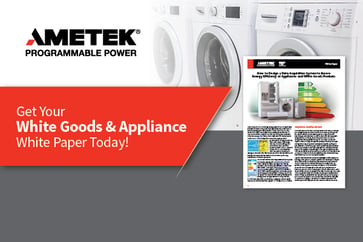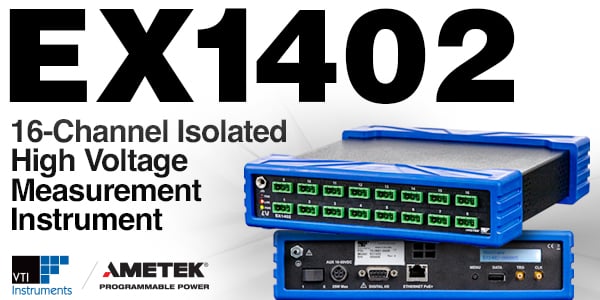Operating expenditures can be substantial over the operating lifetime of a high-channel-count data acquisition (DAQ) system. Consider all the aspects that can contribute to operating costs, ranging from setup and wiring to expenses you can incur if a lengthy test needs to be redone because of a faulty sensor or a network crash. When choosing a DAQ system, carefully evaluate how you can significantly reduce such operating costs with a very slight increase in up-front capital expenditures—in short, nudge up CAPEX to slash OPEX.
First, consider how to minimize the cost of wiring across all aspects of the DAQ system, including transducer leads, power cables, data cables, and any cables needed for synchronization and triggering across multiple instruments. You can save the direct costs of the wiring and the amount of time your technicians will spend making initial connections, changing the system set up to accommodate different devices under test (DUT), and troubleshooting faulty wiring and sensors.
Most importantly, keep your copper transducer leads short, which has the benefit of increasing the accuracy of your measurements. Choose an LXI-capable DAQ instrument that can work within a distributed architecture. This approach allows you to locate your instruments close to or even on top of a DUT such as an appliance. If the tests occur in a temperature chamber, this approach lets you wire up your instrument and sensors outside the chamber and quickly roll in the instrumented device. Then, use a low-cost Ethernet cable to make the longer connections to your host computer or network. In addition, choose an instrument that supports Power over Ethernet (PoE) to eliminate the time and cost of running separate power cables.
You can also save costs by using the IEEE 1588 precision time protocol standard for the synchronization of multiple DAQ instruments and the time-stamping of acquired data. The latest version of this worldwide standard, IEEE 1588-2019, was adopted by the International Electrotechnical Commission as IEC 61588:2021 in June 2021. Using IEEE 1588 saves the costs of running and maintaining dedicated trigger and clock signals to your instruments, again moving functionality from higher-priced cabling to low-cost Ethernet cable. In addition, IEEE 1588 can save programming costs—you can choose DAQ instruments that implement the standard directly out-of-the-box. However, you can retain the flexibility to add software customization, such as dedicating a particular server as a grandmaster clock.
In addition to minimizing costs associated with wiring, you can cut costs by simplifying transducer setup, connectivity, and troubleshooting. An instrument with mini-TC connectors makes it easy to connect and replace thermocouples. Also, choose an instrument with an open-transducer-detection (OTD) function. OTD alerts you when a transducer has failed or become disconnected, signaling you to immediately terminate a test in progress before wasting hours collecting inaccurate data.
Thermocouples will also require cold-junction compensation (CJC). You can choose an external CJC box, but that is a complex, expensive solution that takes up a lot of space and can be difficult for your technicians to set up. Furthermore, a single CJC box for multiple thermocouples can introduce inaccuracies because of potential temperature gradients across a terminal block. A less expensive and more accurate alternative is to select an instrument that provides built-in CJC by including a temperature sensor at each thermocouple input.
In addition, provide for data redundancy. If you control your data-acquisition system over a network, consider choosing an instrument that can function as a standalone data logger that can redundantly store acquired data internally or on a local USB device. Depending on the specifics of your application, this approach can save the costs of repeating tests should a network failure occur during the acquisition process.
Finally, make sure your data acquisition instrument has a sufficiently high sampling rate. The speed of your instrument should not be the limiting factor in how long it takes to acquire the necessary data.
One product with features that help you control operating costs is the AMETEK VTI Instruments EX1401 16-channel isolated thermocouple and voltage instrument. It offers a maximum 20-kS/s/channel sample rate independent of the number of channels being used, provides independent OTD and CJC at each mini-TC input, and includes PoE+ and USB ports.
The case study White-Goods Manufacturer uses VTI Instruments’ EX1401 to Reduce Costs for Energy-Efficiency and Reliability Testing of Refrigerators details how one appliance manufacturer used the EX1401 to make energy-efficiency and other measurements on refrigerators. And the white paper How to Design a Data Acquisition System to Ensure Energy Efficiency of Appliances and White Goods Products examines how other white goods manufacturers can apply the EX1401 in their applications. Finally, the infographic Are you satisfied with your existing DAQ system? compares a DAQ system based on the EX1401 with one based on a scanning DMM.






